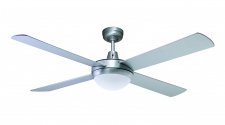There are pathogenic organisms found in healthcare facilities that have developed resistance to antibiotic treatment. This has, in recent years, become a major source of concern for all. The inability of healthcare professionals to contain and fight infectious diseases due to high resistance of pathogenic organisms to antibiotic treatment limits their ability to effectively manage complications amossng immune-compromised patients. Hundreds of thousands of people in the United States are estimated to have fallen victim of antibiotic resistant infections. Healthcare associated infections, also known as nosocomial infections, are becoming more epidemic in the country these days. Some of these infections are airborne, thus posing a higher risk. Airborne infections can spread rapidly especially through a non-immune population.
In order to regulate room airflow in health care facilities, it is essential to have control systems for healthcare spaces in place. This system help ensure a stable and energy efficient work environment for doctors, nurses and patients. Control systems for healthcare spaces are designed to improve indoor air quality, prevent the spread of airborne pathogens and regulate humidity. They also help to reduce the potential viability of surface microbes that settle out of room air.

Healthcare facilities and laboratories are filled with lots of researchers and scientists conducting a wide range of experiments. These experimental projects sometimes require the use of chemicals and some harmful elements which distort air quality within the facility. A good air flow construction system designed specifically for healthcare spaces can address infection control in hospitals. With this system in place, you can minimize unplanned airflow and reduce the concentrations of airborne infectious agents.
Frequently opened or propped open doors are mostly common in healthcare facilities, making corridors a channel through which contaminated air flow passes to other spaces. When air quality has been compromised, the sure fire way of tackling such issue is through an airflow control system. The system will help interrupt the transmission of airborne pathogens in patients’ room and all other microbial pathways including stairwells, lobbies and corridors. Air flow control systems for healthcare spaces operating all round the clock and are designed to destroy airborne droplets and microbes within seconds.
Most healthcare facilities are aware of the risks posed by airborne disease and as such choose air flow control systems to maintain a stable work environment and precise airflow. One of the major problems faced by most hospitals today is eliminating concentration of airborne pathogens. While some healthcare facilities fail to provide space for patients with highly infectious disease, their action put other patients at risk of contracting such diseases. One of the safety measures used is restricting entry to the section where patients with highly infectious diseases are places. If you are looking to improve the safety and protect the health of those within the facility, it is important to install airflow control systems designed specifically for healthcare spaces. Once there is a sudden reduction in air quality, the systems detects the changes immediately and alerts lab technicians about the impending danger.
















